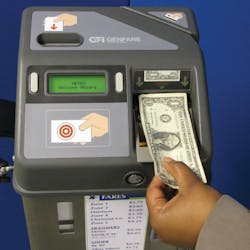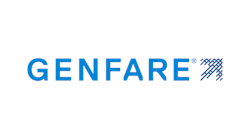On Nov. 11, Metro will start installing new fareboxes on all 342 of its buses, thanks to federal funding for the project. Metro fareboxes collect about $22 million in fares annually, representing about 27 percent of Metro's operating revenue. Metro's current fareboxes are 17 years old and in need of replacement.
Metro's new GFI Odyssey "talking" fareboxes will accept more payment options:
· Cash: The new fareboxes will accept all U.S. coins and $1, $2 and $5 bills. As with a vending machine, the bills cannot be overly dirty, torn or worn. Coins must be dropped one at a time. The fareboxes will not accept coins or bills that are not valid U.S. currency. Exact change will be required until Spring 2012 when other fare options are introduced.
· Metro tokens: The new fareboxes will accept Metro silver and brass tokens for actual value. The customer must pay the difference between the value of the token and the cost of the fare. Metro silver tokens are worth $1.75 and brass tokens are worth $1.50. Currently, only silver tokens are accepted.
· Transfers (beginning with the winter service change on Sunday, Dec. 4): When a customer pays for a transfer, the farebox will automatically issue the transfer and print the time that the transfer expires. To use on the next bus, the customer simply inserts the transfer into the slot on the top of the farebox.
· New fare options coming in early 2012: Beginning in Spring 2012, Metro will begin offering new fare payment options:
- Change tickets issued by the farebox for U.S. bills up to $20
- go*SMART "tap & go" smartcards that can be re-loaded or re-used
- "Rolling" 30-day passes that will replace current monthly passes
- Pre-paid $10, $20 or $50 stored value cards
Metro is also considering other pass options to meet customers' needs.
· Ridership reporting: The new fareboxes will offer improved ridership reporting capabilities to help Metro better analyze ridership patterns and make decisions related to service design and frequency.
New fareboxes will be available for demonstration at Metro's Sales office in Government Square, 120 East Fourth Street, downtown Cincinnati, on Monday, Oct. 31 and Tuesday, Nov. 1, from 8 a.m. - 3 p.m.
"Our new fareboxes will make riding Metro easier and more convenient for our customers," said Terry Garcia Crews, Metro's CEO. "By next spring, we'll begin offering exciting new payment options like smartcards that provide much greater flexibility for our riders. The new fareboxes are another example of how Metro is becoming a more efficient and state-of-the-art transit system."
Metro's new GFI Odyssey fareboxes are being funded 80% by Section 5307 formula funds and Section 5309 discretionary earmark funds made available by the Federal Transit Administration, matched by 20 percent local funding. The total cost of the farebox project is $4.5 million.
Metro is a non-profit, tax-funded public service of the Southwest Ohio Regional Transit Authority, providing about 17 million rides per year in the Greater Cincinnati area.




